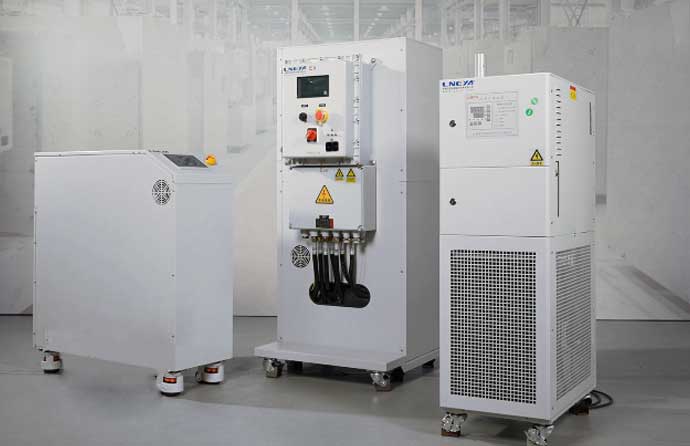How Semiconductor Chillers Improve Reliability in Chip Testing

- Compression Chillers vs Absorption Chillers Key Differences Efficiency and Applications
- What Are the Common Types of Chiller Compressors
- Hidden Costs of Chillers Quotes
- Industrial Chiller vs Industrial Freezer
- What Are Water-Cooled Condensers
- Custom Chiller vs Standard Chiller
- Qu'est-ce qu'un refroidisseur à air ?
- Qu'est-ce qu'un refroidisseur à eau ?
- août 2025
- juillet 2025
- juin 2025
- mai 2025
- mars 2025
- février 2025
- janvier 2025
- décembre 2024
- novembre 2024
- octobre 2024
- septembre 2024
- août 2024
- juillet 2024
- juin 2024
- mai 2024
- avril 2024
- mars 2024
- février 2024
- septembre 2023
- juillet 2023
- juin 2023
- mai 2023
- janvier 2023
refroidisseur à air refroidisseur Installation d'un refroidisseur refroidisseurs Assemblage froid Congélateur refroidisseur d'eau refroidissement chauffage circulateur système de refroidissement et de chauffage système de refroidissement Réacteur en verre double couche système de contrôle dynamique de la température congélateur refroidisseur de gaz circulateur de chauffage refroidisseur industriel refroidissement industriel congélateur industriel réfrigérateur industriel réacteur à double enveloppe refroidisseur de liquide refroidisseur à basse température nouvelles refroidisseur pharmaceutique refroidisseur de processus refroidisseur de réacteur refroidissement du réacteur refroidissement du réacteur chauffage chauffage du réacteur refroidissement système de réacteur circulateur réfrigéré refroidisseur de réfrigération refroidisseur à vis refroidisseur de semi-conducteurs refroidisseur pour tests de semi-conducteurs sundi tcu contrôle de la température chambre de test thermostat refroidisseur à ultra basse température refroidisseur pour essais de véhicules refroidisseur d'eau refroidisseur à eau wtd
Engineers in any semiconductor lab know that a single unstable test can set projects back weeks. Chip testing isn’t only about proving if a design works. It’s about showing that the chip will survive in the real world—where heat, voltage, and time never take a break. Reliability here is everything. And that reliability depends heavily on stable thermal control. That’s where refroidisseurs à semi-conducteurs come in.
What Is Chip Testing and Why Do It?
Chip testing, or semiconductor testing, is where design claims get measured against real conditions. Engineers drive integrated circuits into scenarios that stretch them to the limit. These aren’t casual checks. Tests look for hidden flaws, early-life failures, and the endurance of a chip over time.
Different test stages reveal different truths. Wafer probing identifies defects before packaging. Burn-in testing runs chips under elevated temperatures and voltages to weed out weak ones. System-level testing replicates how chips behave inside real devices.
The goal is clear: confirm that chips can handle years of operation without breakdowns. Without this process, products would hit the market full of risk. Chip testing saves manufacturers from recalls and users from unreliable devices.
Thermal control is one of the toughest challenges in all these steps. Even small swings in temperature distort electrical performance and mask real behavior. Reliable results only come when the environment itself is locked down. That’s where specialized cooling, not generic lab air systems, becomes essential.

Why Semiconductor Chillers Matter in Chip Testing?
Imagine you’re using a new processor. The chip is drawing heavy current, and the setup heats fast. Without active cooling, the device doesn’t just run hot—it gives false data. You may think a design is failing, when in fact the issue is uncontrolled heat. A semiconductor chiller stabilizes this environment, keeping temperature steady during hours or even days of testing.
Precision Cooling
Standard HVAC systems just aren’t built for this job. Air systems fluctuate too much and can’t reach the low setpoints needed. Semiconductor chillers, on the other hand, can hold temperature within fractions of a degree. That stability ensures the only variable under test is the chip—not the room conditions.
Protecting Test Equipment
Chillers don’t just protect chips; they protect the tools around them. Test rigs, probe stations, and laser systems generate heat too. If left unchecked, that heat shortens equipment life and introduces noise into results. With a dedicated cooling loop, semiconductor chillers keep both the chip and the instruments safe, avoiding costly downtime.

Matching Extreme Test Profiles
Modern chips face more demanding use cases than ever—AI workloads, automotive electronics, 5G base stations. These applications push devices to run hotter for longer. Testing them means simulating those stress conditions.
Semiconductor chillers can ramp cooling quickly, follow dynamic test profiles, and switch between heating and cooling when thermal cycling is required. Standard lab coolers can’t keep up with this pace.
Stability Makes Reliability Possible
A chip might pass functional checks but fail later in the field. Many of those failures trace back to unreliable testing environments. By holding temperature rock steady, chillers remove uncertainty from the equation. This gives chip makers and their customers confidence that the results they see in the lab will hold true in the market.
Conclusion
If your team is pushing chips through demanding test programs, don’t leave thermal control as an afterthought. Refroidisseurs de semi-conducteurs give engineers the high-precision temperature control they need to make the testing reliable.
Talk to a supplier that specializes in semiconductor chillers and understands the stakes — LNEYA team consistently provides you with reliable semiconductor test temperature control solutions.
Refroidisseurs associés
CONTACTEZ-NOUS
TEL:
EMAIL:
WeChat et WhatsApp:

Wechat QR

Vous avez une question ou besoin d'un devis ? Remplissez le formulaire ci-dessous et notre équipe vous répondra sous 24 heures.
 LNEYA Industrial Chillers Fabricant Fournisseur
LNEYA Industrial Chillers Fabricant Fournisseur
















